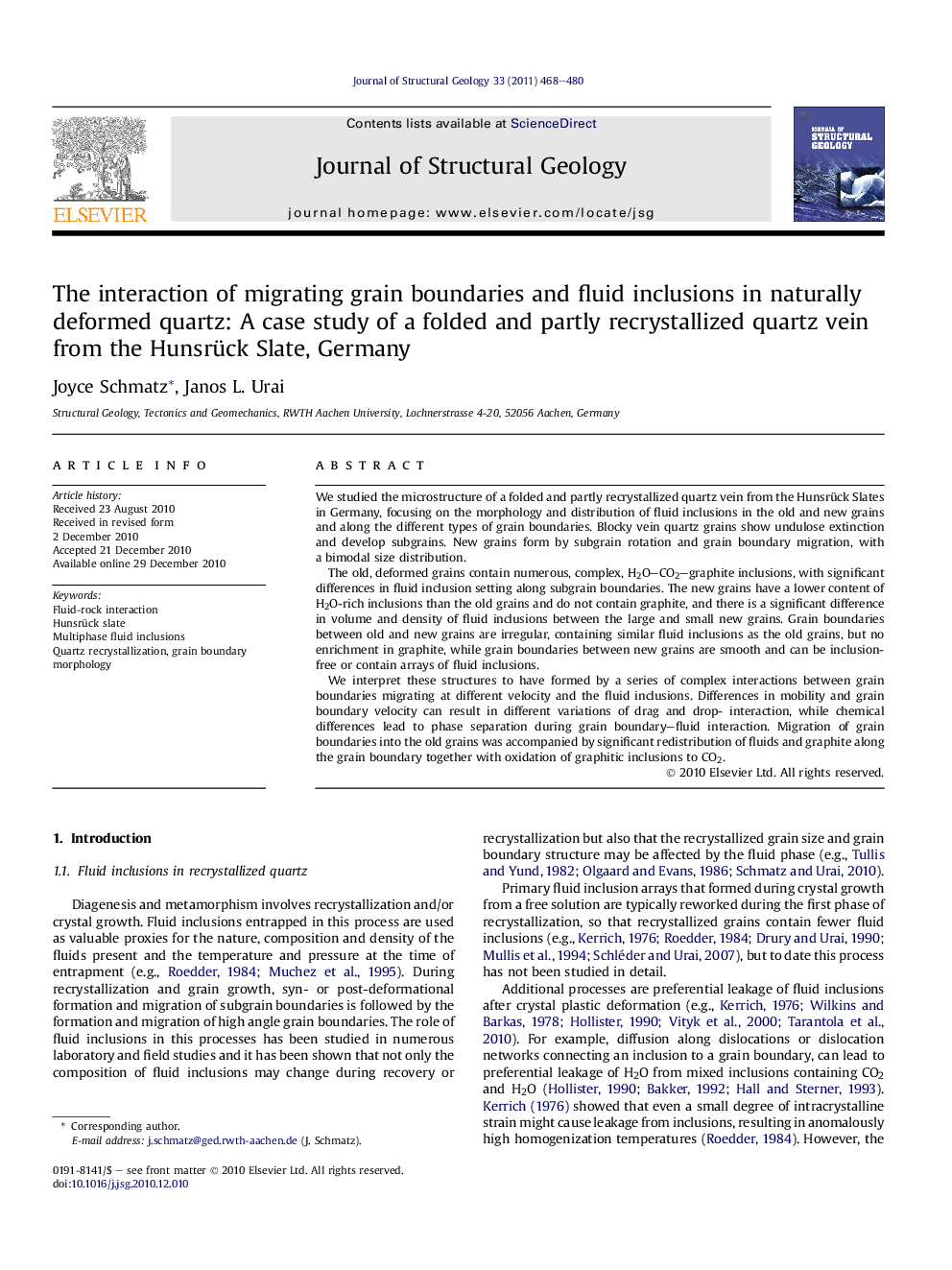| Article ID | Journal | Published Year | Pages | File Type |
|---|---|---|---|---|
| 4733365 | Journal of Structural Geology | 2011 | 13 Pages |
We studied the microstructure of a folded and partly recrystallized quartz vein from the Hunsrück Slates in Germany, focusing on the morphology and distribution of fluid inclusions in the old and new grains and along the different types of grain boundaries. Blocky vein quartz grains show undulose extinction and develop subgrains. New grains form by subgrain rotation and grain boundary migration, with a bimodal size distribution.The old, deformed grains contain numerous, complex, H2O–CO2–graphite inclusions, with significant differences in fluid inclusion setting along subgrain boundaries. The new grains have a lower content of H2O-rich inclusions than the old grains and do not contain graphite, and there is a significant difference in volume and density of fluid inclusions between the large and small new grains. Grain boundaries between old and new grains are irregular, containing similar fluid inclusions as the old grains, but no enrichment in graphite, while grain boundaries between new grains are smooth and can be inclusion-free or contain arrays of fluid inclusions.We interpret these structures to have formed by a series of complex interactions between grain boundaries migrating at different velocity and the fluid inclusions. Differences in mobility and grain boundary velocity can result in different variations of drag and drop- interaction, while chemical differences lead to phase separation during grain boundary–fluid interaction. Migration of grain boundaries into the old grains was accompanied by significant redistribution of fluids and graphite along the grain boundary together with oxidation of graphitic inclusions to CO2.
► Deformation and formation of subgrains involves interaction of mobile subgrain boundaries with graphitic inclusions. ► Recrystallized grains may contain significantly amount of fluid inclusions with different proportions for different grain sizes but still less fluid than primary grains. These differences point to a reduction of water-rich fluid during recrystallization, at different rates for small and large new grains. ► The migration of grain boundaries into deformed primary grains involves movement of the graphite into the moving grain boundary associated with oxidation to CO2 and also transport of part of the water-rich phase along the grain boundary. Another part is included into the growing grains by drag and drop processes. ► Grain boundaries between recrystallized grains contain fluid inclusion arrays formed by the healing of a fluid film on the grain boundary. ► Removal of fluid inclusions from primary grains by grain boundary migration occurs by several passes of grain boundary, and different phases are removed by different rates.
